Latest News
November 2, 2007
By Mike Hudspeth
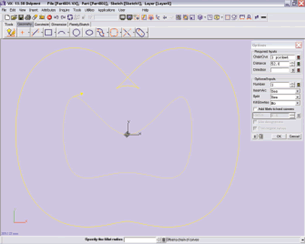 Figure 1: VX v13 will look at offset entities and detect where the result will self-intersect. Unlike some other modeling software, it will eliminate the problem as it goes, instead of exploding. Figure 1: VX v13 will look at offset entities and detect where the result will self-intersect. Unlike some other modeling software, it will eliminate the problem as it goes, instead of exploding. |
Modeling & Embossing
VX v13 comes in several packages so you can scale them to your needs. VX Mechanical offers basic solid modeling as well as assembly modeling for around $2,000. Next up is VX Modeler, also about $2,000, which expands your capabilities with the addition of free-form surfaces and geometry healing. Then there’s VX Designer for $4,000, which rounds out your capabilities with sheet metal, reverse engineering, photorealistic rendering, and design optimization.
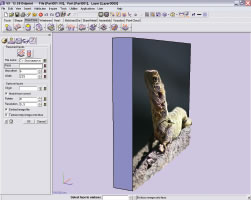 Figure 2: VX v13 lets you create embossed geometry based on importedimages. Instead of a bump map you get real 3D volume displacement. Figure 2: VX v13 lets you create embossed geometry based on importedimages. Instead of a bump map you get real 3D volume displacement. | 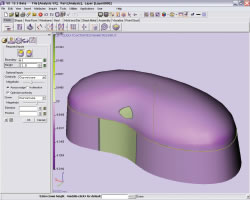 Figure 3: By turning on the analysis mode you can view potential problemsas they occur. Here, you can see a slight imperfection where it’s not desired. Figure 3: By turning on the analysis mode you can view potential problemsas they occur. Here, you can see a slight imperfection where it’s not desired. |
VX v13 is a hybrid modeler. That means that while you can create sketches just as you do with any other parametric modeler, you can also start with primitives. If this is your approach, you look your part design over and decide on a shape and then place the primitive you want and pull it to the right size — it’s a very empirical approach. One advantage to the use of primitives is that it is not tied specifically to any 3D place, which means you can reposition it at any time. You can also model with construction geometry — like sketches or simply explicit curves. If you are modeling along and need to offset some curves to make your solid, sometimes you are going to get bowties — areas of self-intersecting solids (see Figure 1). Many 3D modelers cannot handle these. VX v13 will eliminate them and go right on modeling without breaking a sweat.
Likewise, many modelers make you keep your sweeping profile in direct contact with your guide curves. Not so VX v13. Why would you want to do that? Sometimes you get into a complicated model where there’s a lot going on and just seeing everything necessary becomes difficult. Setting your creation geometry somewhere out of the way helps you gain immediate access to it without cluttering up the view. Another great function is the three-surface blend. Just like a three-entity fillet, you pick three surfaces and VX v13 will give you an optimized blend tangent to all three surfaces.
The Emboss feature might not be new to VX v13, but it is one of my favorite capabilities. You can import an image and VX v13 will use the light and dark areas to assign relative highs and lows. Lighter areas project higher off the surface and darker areas dig lower into the surface. Then you can wrap the image onto the resulting surface (see Figure 2). Imagine importing a photo of your boss (or anyone else) and embossing it onto a solid. You could then have it machined or rapid-prototyped. What a keepsake! (Please note that I am not suggesting using company resources for personal projects.) I am reminded of those sculptures that are in fact reversed images engraved in plastic — and when you hold them up to a light they appear as fully shaded 3D images.
Can You See Me Now?
Visualization is often a vitally important capability. In VX v13 you can model in analysis mode. That lets you see and fix things in near real time (see Figure 3). And how many times have you had a model bog down because of too much complexity? It happens way too often. Frequently it’s because of threaded holes. They add a lot of complex surfaces that your CPU must keep track of. But VX v13 has a slick way around that. You can tell VX v13 that a hole is threaded and elect to have it display a bitmapped image of threads that represent the true geometry (see Figure 4, page 49). You get the best of all worlds. The system knows the hole is threaded, it will show up as threaded in section and pictorial views, and it doesn’t have to calculate it all — all that in real time. Performance goes up and everything looks great.
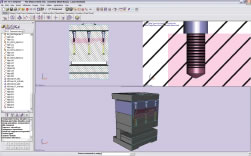 Figure 4: You can see a threaded hole in VX v13 without paying a performance penalty.VX v13 will apply a bitmap image to the face. | 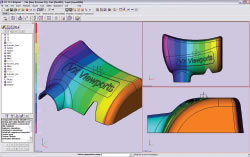 Figure 5: A new feature in VX v13 lets you set up your interface to showmultiple viewports. |
Also, for all you former AutoCAD users out there, you can activate multiple viewports (see Figure 5, page 49). That lets you view your model from any view you want to specify simultaneously as you work.
I have always liked that you can have multiple parts (entire assemblies) in one VX file. That means you have less to keep track of. VX v13 is excellent for tool-and-die work. It can create an entire mold using a library of industry standard parts compiled of items that came directly from manufacturers like DME and PCS. That makes your assemblies both fast and accurate. VX v13 also has mechanical simulation with camera controls and AVI output, plus it does CAM with its VX Machinist package, which comes in at about $6,000.
You’ll Like What You See
I have been keeping my eye on VX for several years now and I really like what I see. I wish I had more space to show you more of the fine functionality that VX v13 has to offer.
If you would like to learn more or arrange to see a demo, you can visit the website at vx.com. Check it out. You’ll be glad you did.
More Information:
VX Corporation
Melbourne, FL
vx.com
Mike Hudspeth is a senior designer for a global medical company and has been using a wide range of CAD products for more than 20 years. He, his wife, two daughters, and their cats live outside of St. Louis, MO. Send him an e-mail about this article to DE-Editorsmailto:[email protected].
Subscribe to our FREE magazine, FREE email newsletters or both!
Latest News






